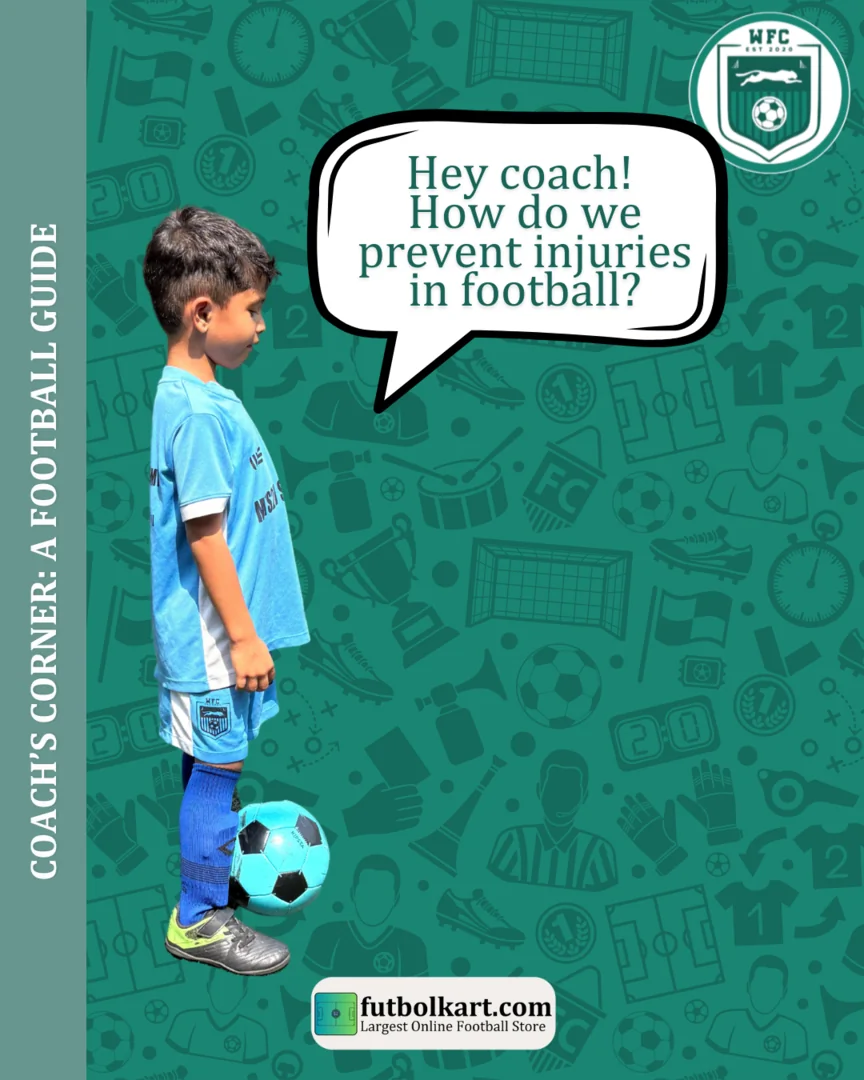Hey coach! How do we prevent injuries in football?

Proper Warm-Up & Cool Down
Warm-up: Always begin with dynamic movements — light jogging, high knees, leg swings, arm circles.
Cool down: Static stretches after training help relax muscles and prevent stiffness.
Age-Appropriate Training
Don't overload young bodies.
Training sessions should match their physical and mental development.
Focus on technique, not just intensity or winning.
Correct Technique & Form
Teach proper tackling, landing, dribbling, and running techniques.
Repetitive bad form leads to chronic injuries.
Progressive Load
Gradually increase the intensity and duration of sessions.
Sudden spikes in training load cause stress injuries (like shin splints or muscle pulls).
Rest & Recovery
At least 1–2 rest days per week.
Recovery days should include light movement, hydration, and sleep — not just screen time.
Hydration & Nutrition
Dehydration causes muscle fatigue and cramping.
Balanced diets support muscle recovery and growth.
Proper Footwear & Gear
Use the right boots for the surface (firm ground, turf, indoor).
Shin guards are essential in all contact drills.
Strength & Conditioning
Light strength exercises and core workouts help improve balance, coordination, and injury resilience.
Listen to the Body
Teach kids to report pain — playing through pain often makes it worse.
Coaches should notice changes in movement or behavior (signs of fatigue or injury).
Qualified Coaching
Trained coaches know how to spot risk early and tailor sessions safely.
Avoid unsupervised drills that may result in poor form or risky play.
